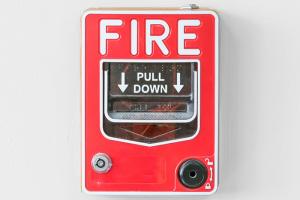Technology outpaces exit sign requirements
Many American Society for Health Care Engineering (ASHE) members express frustration at the time and resources required to conduct monthly exit sign inspections required in the 2012 edition of the National Fire Protection Association’s NFPA 101, Life Safety Code®, section 7.10.9. ASHE’s Exit Sign Inspection & Burden Survey addressed this by collecting data on exit sign inspection failures in relationship to staffing costs.
Eighty-six respondents performed an average of 3,545 (median = 1,782) yearly LED exit sign inspections, as well as an average of 2,860 non-LED (median = 90) exit sign inspections per campus. Thus, results were shared for an approximate total of 312,610 exit sign inspections across all campuses. Staff spent a median of 49 hours (average = 246 hours) per year conducting these inspections, with an average wage of $27 per hour. Translated roughly, this totals to an average of $6,600 in staffing costs per year, per campus.
The median number of failures for LED exit signs per campus, over an entire year, was zero (average = 1.3). Non-LED exit signs had higher failure rates, at a median of 10 for the year (average = zero); however, these findings were affected by a few campuses with extreme scores. This suggests an extremely low failure rate, particularly for LED signs.
This conclusion was echoed by many of those surveyed. Open comments by respondents argued that monthly inspections were an unnecessary burden. They also cited advancements such as LEDs and emergency power tie-ins that create a situation where current technology has outpaced the monthly inspection requirement.
Given these results, ASHE is working with the NFPA Codes and Standards Review Committee to develop a proposal to recommend the deletion of the requirement for visual inspections of exit signs within the 2021 edition of the Life Safety Code. The data above will be submitted as part of the justification of a public comment to the first draft report of NFPA 101. ASHE thanks those who provided their data to help justify this recommendation. Their efforts in supplying the data is key to being able to make scientifically based recommendations within the code development process.




